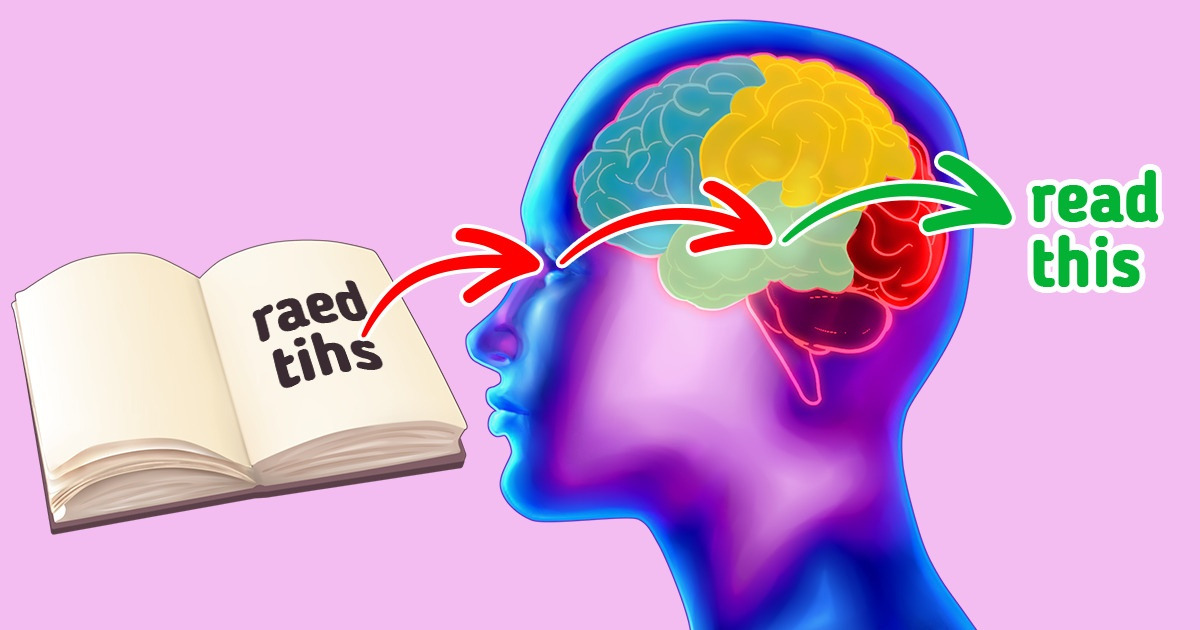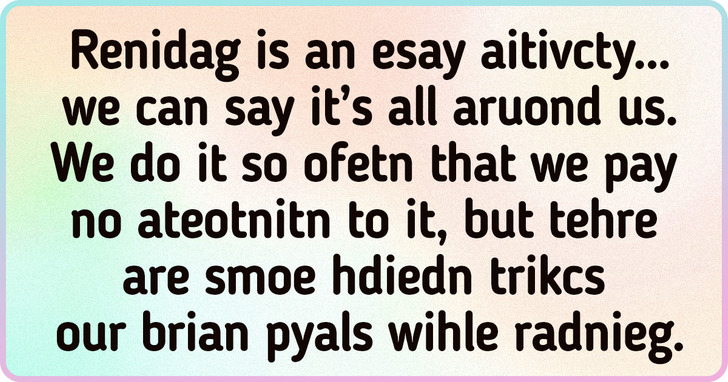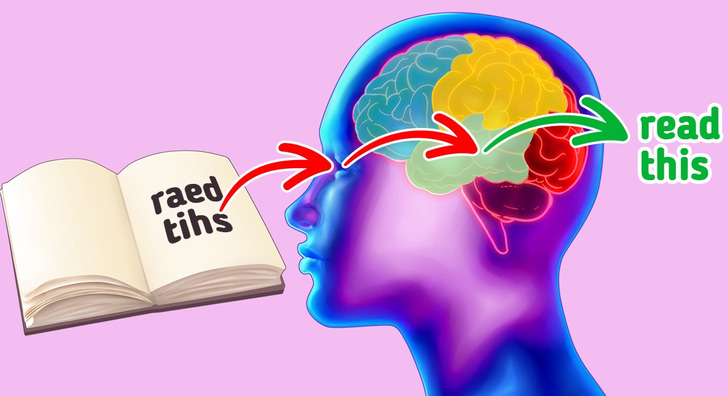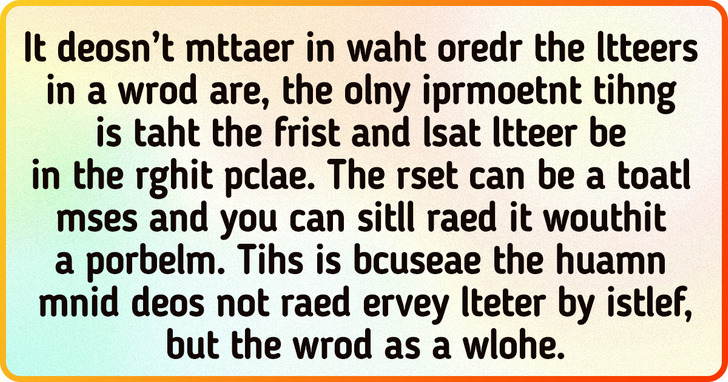Why Yuor Barin Can Raed Tihs

Reading is an easy activity for most, we read books, our social media feeds, important work emails... it’s all around us. We do it so often that we pay no attention to it, but there are some hidden tricks our brain plays while reading. 5-Minute Crafts will tell you about the curious phenomenon of reading.
1. Read that again

- Apparently, it’s not that hard to read a sentence, even if the letters inside the words are very much out of place. Research has found that mixing the words like this will indeed slow down our reading speed by about 11% but when we’re confronted with a string of letters, the simple shape of the letters will help our brain create an image of a word and compare it to the correct version stored inside to help us see a full word.
- There are also some jumbled arrangements of letters which are easier to read, for example, “UNIEVRSITY” is easier to understand than “UTISERVNIY.”
2. How we do this

The process of reading starts within our brain when it manages to bring out the meaning of letters and symbols in a word by decoding them.
- Focusing on the visual part of it, it’s easier to read a word with its letters mixed up when the first and last letters of the said word are kept intact and the middle letters get mixed or replaced with other similar letters. We can also read a full word if some of its letters are replaced by similar-looking numbers, for example, “NUM83R5.”
- Linguistically, words we see more often are always easier to recognize and read along with words that sound similar, like “pun/fun.”
Finally, when looking at the brain of people reading mixed-up words, researchers found that when we look at a word, the visual part of our brain, called the lateral occipital region, gets activated before it compares that with the correct words stored in another part of the brain, the visual word form area.
3. How this phenomenon became viral

In 2003 this text started appearing on the internet, with the original demonstration of this effect being by Graham Rawlinson in a letter to a publication. His research said that changing the letters in the middle of the words has little effect on reading, like in the viral text. However, this text employs some other tricks to make it easier to read:
- Short words are easier since words up to 3 letters in length don’t change.
- Function words like be and or you stay the same, which helps us read the sentence without much difficulty.
- In the sentence above, many of the words remain with their order intact and correct, although the reader tends to not notice these words since they are function words.
What about you? Could you read it without any trouble? 🧐